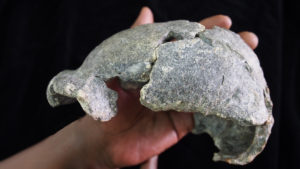
Science Advances—Scientists have discovered new fragments of two Homo erectus skulls alongside different types of stone tool technologies, helping to dispel the assumption that these different technologies were used by different species of hominins or in different eras. The skull fragments also hold clues to possible differences between male and female members of H. erectus, a species of human ancestor that appeared about two million years ago, as well as to the lifestyle and diet of the species. Archaeologists and paleoanthropologists classify stone tools by their complexity and the time period in which they were used. “Mode I” tools are those with simple modifications—a few pieces chipped off to make sharp edges. Mode II tools are created by removing flakes on both sides of the stone resulting in more refined, “pear-shaped” hand axes. It was previously assumed that H. erectus invented Mode II tools, which succeeded Mode I tools used by earlier hominins, though some researchers have proposed a more complex history. Now, Sileshi Semaw and colleagues have discovered H. erectus skulls in close association with both kinds of tools in Ethiopia. They date one skull to 1.26 million years ago and the other to 1.6 to 1.5 million years ago. They interpret these findings to mean H. erectus used both technologies concurrently over hundreds of thousands of years, indicating the species was behaviorally flexible and diverse. The researchers also analyzed the features of the skulls, one male and the other female. The female skull was smaller and slimmer, indicating H. erectus may have been sexually dimorphic. The isotope data point to these individuals as having a broad, varied diet – consisting of plants, eggs, insects and more – but additional isotopic data from more samples over a larger geographic range would be needed to confirm this, the authors say.
___________________________

The DAN5 cranium, held by Dr. S. Semaw.
Michael J. Rogers, Southern Connecticut State University
___________________________
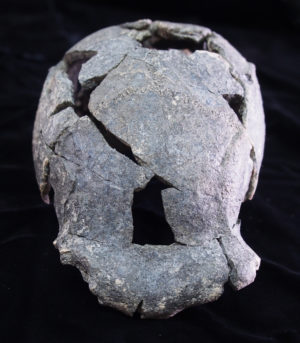
The DAN5 cranium, view from the front and above. Michael J. Rogers, Southern Connecticut State University
___________________________
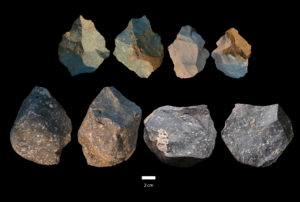
Two opposing views of Oldowan stone tools from DAN5. Michael J. Rogers, Southern Connecticut State University
___________________________
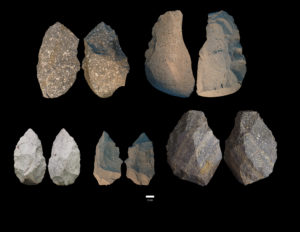
Two opposing views of Acheulian stone tools from DAN5. Michael J. Rogers, Southern Connecticut State University
___________________________
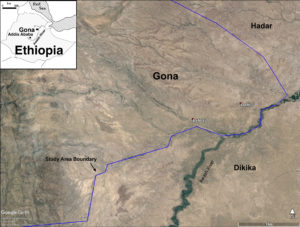
Map of the Gona Study Area. Michael J. Rogers, Southern Connecticut State University
___________________________
Article Source: Science Advances news release
___________________________
Advertisement





